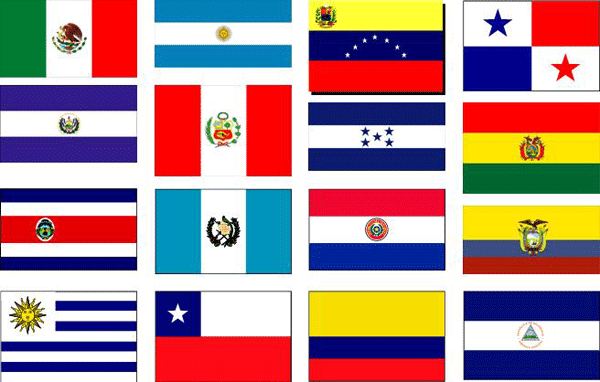Culture Clashes in Spanish Classes

From the first bell of the day, students flow in and out of their Spanish classes in the hopes of learning a language and an array of customs and traditions that will be useful to them in their futures or in their present-day encounters with people of Hispanic origins. While teachers often succeed in teaching their students the nuances of the Latin-based language, they often struggle to incorporate Hispanic culture in their lessons, leaving students with an insufficient understanding of language’s background and the lives of those who speak Spanish as their native tongue.
The relatively short distance between Quartz Hill and the Mexican border, as well as Los Angeles, has allowed most students to be exposed to Hispanic cultures from young ages as they encounter and hear the stories of the numerous Hispanic people in the area.
Students’ thorough understanding of a diverse range of Hispanic cultures is valued among teachers. Most teachers already incorporate Hispanic culture in their classes, but express disappointment in the lack of time available to delve beyond the surface of the Hispanic traditions they teach.
Señora Vital, who teaches Spanish 1 and 2 Honors as well as the International Baccalaureate Spanish class, stated, “I wish I could delve into more detail when teaching culture, but there isn’t enough time in the school year to include in-depth discussions about different countries’ customs.” Teachers struggle with time constraints as they attempt to introduce their students to the immense diversity of those who speak Spanish in countries all over the world.
Despite their efforts, they are only able to scrape the surface of the Hispanic cultures if they are able to discuss it at all. Señorita Zavala, who teaches Spanish 1 and Spanish 1 Honors, has said that she has been unable to include any culture in the curriculum.
Students whose teachers do not incorporate enough culture in their curriculum are dismayed. Jasmine Alvarado, a senior and former Spanish student, has stated, “As a former Spanish student, I was taught culture in my classes, but very briefly. I definitely believe that teaching culture is important because you just submerge yourself even deeper in the language and that actually helps you understand the language more and why certain countries speak the way they do.” The lack of cultural teachings in some Spanish classes leaves students with a feeling of discontent and incompetence in the subject.
Emma Montesdeoca, a freshman in Mrs. Garcia’s Spanish 1 class, where little culture is taught, said that she wishes Mrs. Garcia included culture in the classroom. She would like it to be diverse and cover different types of traditions as opposed to simply focusing on one country’s customs.
As most of the students’ encounters with those of Hispanic descent occur with Mexicans, some teachers have prioritized the teaching of Mexican customs, traditions, and holidays over those of other Hispanic countries. Señora Reyes, a Spanish 1 and 2 Honors and Spanish Literature AP teacher, for example, explained that she teaches “based on what’s happening in the community.”
Of course, with the Antelope Valley so close to Mexico, many of the holidays celebrated throughout the region tend to be based on Mexican culture. Students in Señora Reyes’ class often spend time to learn about traditions such as Las Posadas near Christmas time, Cinco de Mayo, and La Batalla de Puebla later on in the year. While she does recognize that her teaching may be partial to her homeland, Reyes expressed her belief that, “when we [Spanish teachers] teach, we represent our own culture.”
Despite focusing mainly on Mexican customs, various students have reported that they enjoy her method of incorporating culture into the class as it is engaging. Tracie Aguirre, a senior, shared, “I personally like it because she [Señora Reyes] makes it fun and goes in depth.”
In contrast to Señora Reyes’s teaching style, Spanish teacher Señor Ostler utilizes a different approach to the task of incorporating culture into his lessons. To educate his students about the different customs and traditions, Señor Ostler states, “I teach from the textbook and that includes artists, music, food, history, and cultural comparisons.” He also shared that he once lived in Venezuela. He recounts some of his experiences to his students so that they understand the culture on a more everyday basis. His method does include a greater selection of countries to teach, but even he admits he favors what he is more knowledgeable in: “I do try to be more well rounded, but I know I may focus on what I know, which is Venezuela.”
Despite the cultural diversity in Señor Ostler’s lessons, the textbook is not always a success amongst the students, who often find the passages to be duller than more immersive ways of teaching. Amber Duarte, a sophomore in Señor Ostler’s Spanish 2 Honors class, explained, “I don’t really like his method of teaching culture because it’s just lessons out of the textbook.”
Without engagement in the classes, some students disregard some of the cultures to which they are exposed. Some say the fault does not lie in the pupils’ unwillingness to learn, but rather, in the formulaic, mind-numbing textbook’s explanations of the cultures. As another of Señor Ostler’s students, Junior Destiny Ramirez, expressed, “Latino culture is very beautiful and everyone should get the chance to learn more about it.”
When learning language, a thorough understanding of the language’s corresponding cultures is imperative for true comprehension of the language and applicability of the learnings in life. However, when time constraints or teachers’ struggle to balance language and culture in lessons cause them to teach insufficient bits of Hispanic culture or none at all, students are left with a sense of dismay and incompetence.
Although teachers often cover parts of Hispanic culture, they tend to focus on one country as the representative of the Hispanic world. Students must be aware of Hispanic customs, traditions, and holidays in various countries in order to be able to connect with those of Hispanic descent whom the students will hopefully communicate with using the Spanish language. The task of balancing engaging grammar lessons with cultural background is a meticulous dance Spanish teachers have yet to master, but a crucial one for the students of Quartz Hill.

I’m Ola Elmahdi, a young, less than energetic editor of the Ubiquity. My favorite article from the Ubiquity is probably “Modesty: Not Always a Virtue”...

In one word, I describe myself as colorful. I adore watching sunrises and sunsets, reading books by candlelight, going on picnics with the stereotypical...







